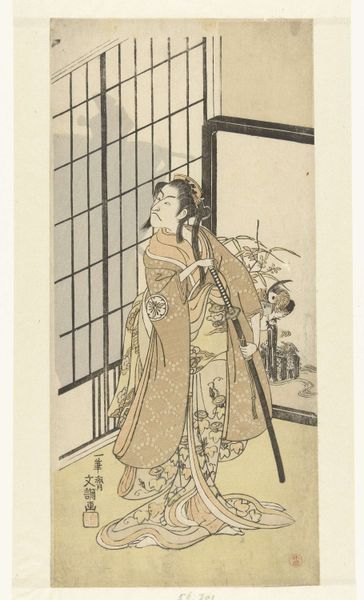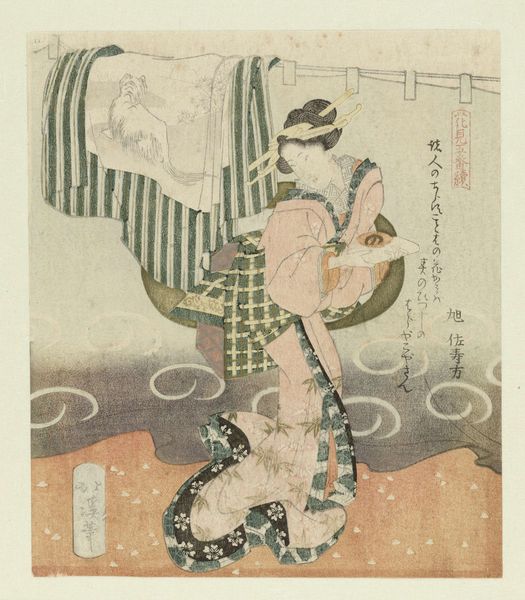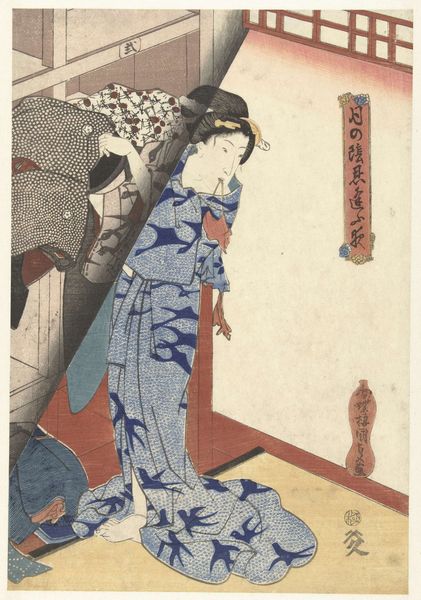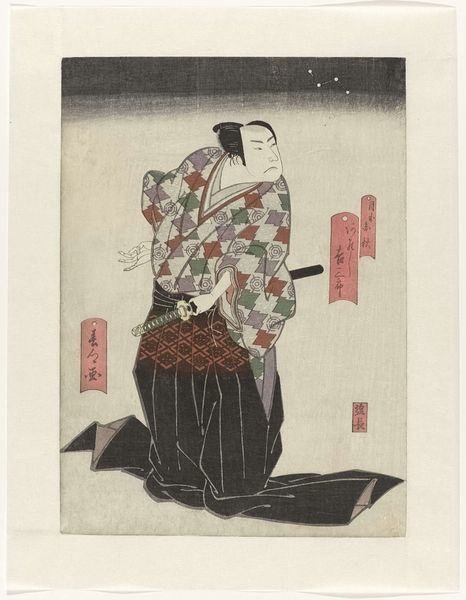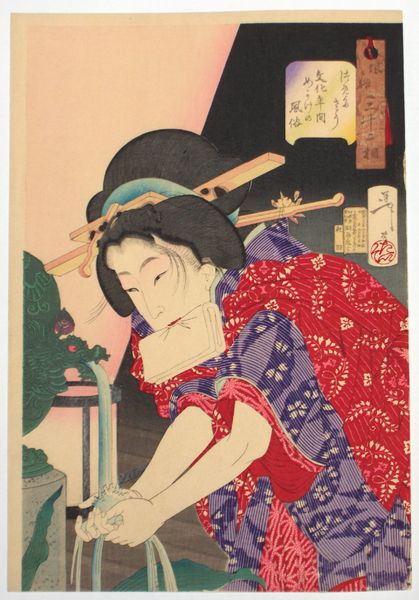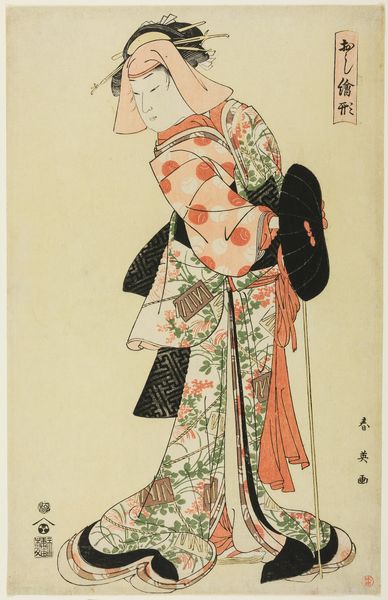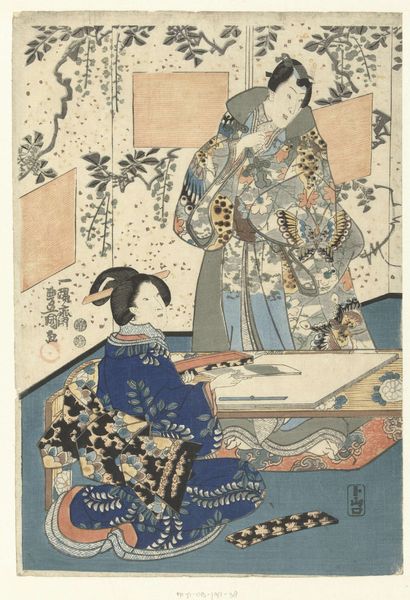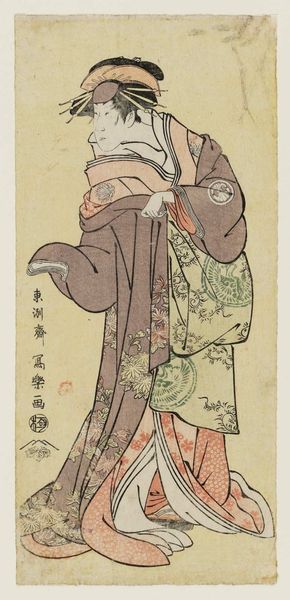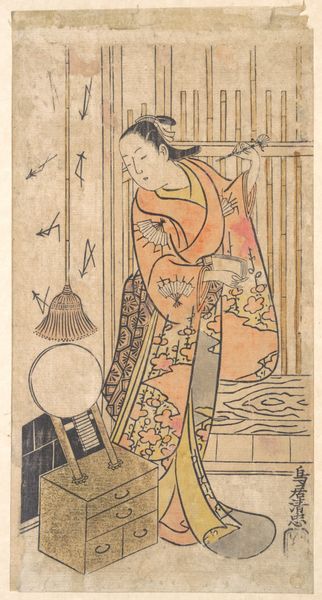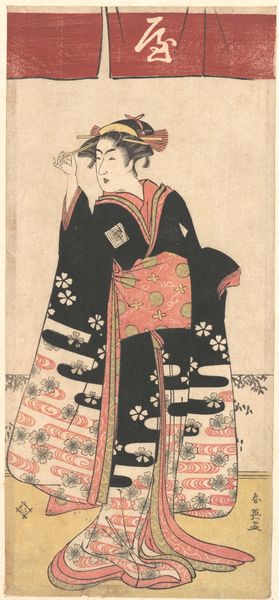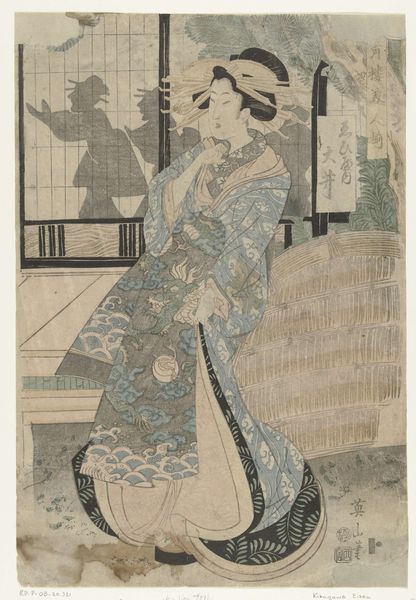
print, woodblock-print
#
portrait
# print
#
asian-art
#
ukiyo-e
#
historical fashion
#
woodblock-print
#
genre-painting
Dimensions: height 358 mm, width 246 mm
Copyright: Rijks Museum: Open Domain
Curator: Looking at "Vrouw bij lamp," a print by Utagawa Kunisada from around 1836 to 1838, the first thing that hits me is this quiet intimacy. It feels like stepping into a hushed, private moment. Editor: Absolutely. You feel that immediate sense of enclosure. The composition, almost split diagonally between the woman and the patterned screen, is strategically designed. The lamp and tea set establish a domestic sphere that also illuminates deeper sociocultural nuances, no? Curator: It’s the lamp, I think. It draws your eye, but it also throws her face into shadow, making you wonder what she's thinking. Is it melancholy? Focus? Daydreaming? There's such ambiguity in that single face that draws you in like a magnet. Editor: That's the clever staging of Utagawa. The 'genre painting' feel masks complex ideas about women and their role in early 19th century Japan. Trapped in the house, trapped in her own presentation, the intricate clothing only emphasizing that the subject isn’t only aesthetic, but an indicator of social status, even restraint. The composition evokes questions about the artist’s representation. Is this reverent? Or does it reflect a power imbalance? Curator: Right, right. Because she's not looking out, is she? She's looking *down*. As if almost trapped into herself. Also, look how the detail in her robe contrasts with the minimal background. Everything focuses on *her*, on her quiet presence. The patterns ripple like waves almost containing her… Editor: The way the artist situates the composition also calls for contemporary discussions about agency, identity and gender, don't you think? Is she constrained, or finding power in her defined roles? The details you point to add layers that we must actively address when encountering visual cultures like these. Curator: So true, the work gives as much as it asks from its audience. In this tiny piece, the everyday becomes something profoundly still and resonant. I hadn’t anticipated lingering so much on what’s on display! Editor: Precisely. It demonstrates how careful aesthetic choices have historically encoded societal values that still ripple out, urging conversations for critical interpretation even today.
Comments
No comments
Be the first to comment and join the conversation on the ultimate creative platform.
